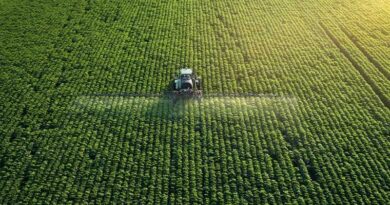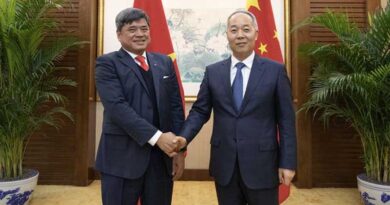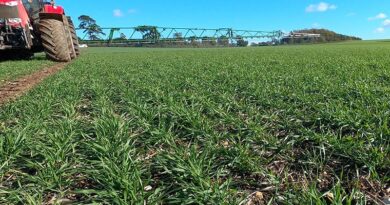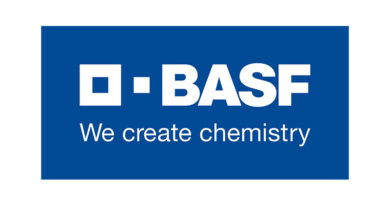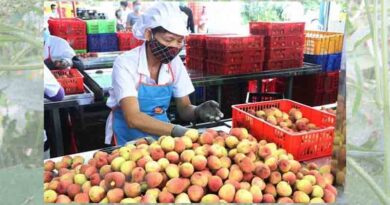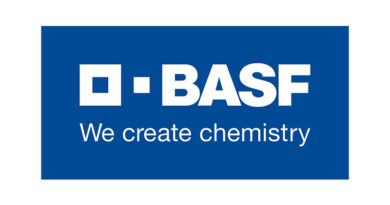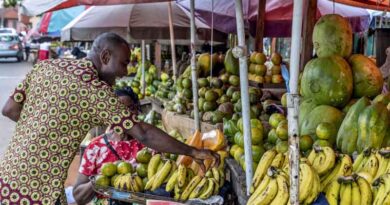China: Identify the focus of financial services for rural revitalization
08 January 2024, China: The recently released “Implementation Opinions of the State Council on Promoting High-Quality Development of Inclusive Finance” (hereinafter referred to as the “Opinions”) clearly proposes to assist the effective implementation of the national strategy of rural revitalization. The main measures include improving the rural financial service system; strengthening financial support for rural industrial development, cultural prosperity, ecological protection, urban-rural integration and other fields; increasing financial security for all aspects of food production and various entities; strengthening agricultural support Medium and long-term credit support for rural infrastructure construction; broadening financing channels for rural-related entities; etc.
Improve rural financial service system
Financial services entering villages and households must first rely on the rural financial service system, which includes two key components: basic financial services and credit system construction.
In recent years, basic financial services have developed rapidly in counties and rural areas in my country. The latest statistics from the State Administration of Financial Supervision and Administration show that the outlets of banking institutions across the country currently cover 97.9% of towns and villages, basically realizing that every township has institutions, every village has services, and every household has an account.
With basic financial services as the “foundation”, the construction of the rural credit system has been solidly advanced. Precise credit is the key to financial services for rural revitalization. The difficulty in precise credit lies in how to effectively obtain information about farmers, how to assess credit ratings, and how to determine the amount and price of a loan. The construction of a rural credit system is to solve these difficult problems.
The reporter’s investigation found that the current basic idea for the construction of the rural credit system is that banks cooperate with local governments, especially administrative villages, with the former taking advantage of capital and expertise, and the latter taking advantage of people and local familiarity. The two play an important role in information acquisition, credit rating, and The advantages in post-loan management and other aspects complement each other and form synergy.
Currently, many financial institutions are exploring the “party building + finance” model. Hunan Liuyang Rural Commercial Bank and the local government jointly launched the “Party Building Leading Village Officials Action” and selected financial village officials to settle in the local administrative villages. Bank employees were sent to the front line to bring financial services to the fields through village offices and full-scale visits. The head of the land.
The Agricultural Bank of China also recently launched a “Party Building + Finance + Technology” comprehensive service platform for credit village credit users. With the help of this platform, village committees can apply for credit village assessment and recommend customers through online channels. Banks can acquire customers more accurately and monitor and manage the effectiveness of credit villages. At present, the Hainan Branch of the Agricultural Bank of China has created a total of 1,030 “Party Building + Credit Villages” and provided a total of 4.4 billion yuan in loans to farmers in the credit villages, benefiting 46,000 farmers.
There is another useful way to build a rural credit system—good rural governance. Rural revitalization is inseparable from a harmonious and stable social environment. At present, the Industrial and Commercial Bank of China has joined forces with the Agricultural and Rural Affairs Bureau and government departments in Linfen, Shanxi, Chengdu, Sichuan, Miyun, Beijing and other places to create a “Rural Style Points Management Platform” that provides “points application – approval – publicity – exchange – reconciliation”, etc. Full process service. “This will not only help improve the implementation efficiency of the ‘rural governance point system’, but also help banks establish credit portraits of farmers and rural areas through point data, accurately reach high-quality credit villages and credit users, and provide them with credit support. .” said the relevant person in charge of ICBC.
“Next, we need to improve the rural financial service system and build a banking institution service pattern with clear layers, complementary advantages, competition and cooperation.” said the relevant person in charge of the State Administration of Financial Supervision. Among them, rural small and medium-sized banks have many outlets and are widely distributed, and are the ones closest to farmers. financial institutions. At present, there are 3,862 small and medium-sized rural banks across the country, more than 70% of the legal entities are in counties, and there are nearly 80,000 business outlets. They are responsible for covering most of the gaps in financial services and institutions in towns and villages. “The State Administration of Financial Supervision will lead small and medium-sized rural banks to deeply implement the concept of ‘finance for the people’, focus on urgent, difficult and urgent issues in the field of ‘agriculture, rural areas and farmers’, and give full play to the role of finance in assisting rural revitalization,” the person in charge said.
Match the characteristics of rural industrial development
Industrial revitalization is the top priority of rural revitalization. The “Opinions” propose to strengthen financial support for rural industrial development, cultural prosperity, ecological protection, urban-rural integration and other fields.
“Financial services must match the characteristics of the industry.” Liang Shidong, retail business director of the Postal Savings Bank of China, said, “There are many characteristic industries in rural areas, such as majia pomelo in Jiangxi and tangerine peel in Guangdong. However, these industries have their own characteristics and different credit needs. Loans The amount, term, and repayment method are all different.”
To this end, Postal Savings Bank adheres to “one industry, one plan”, matches and formulates different product elements for industries, and broadens the scope of collateral and pledges based on customers’ capital settlement and operating cycle characteristics. As of the end of September 2023, the bank’s cumulative industrial loans exceeded 100 billion yuan, and the balance increased by more than 82 billion yuan compared with the end of the previous year, serving nearly 200,000 industrial business entities.
For some farmers, financial products are still an area they do not understand. In order to adapt to this characteristic of farmers, many commercial banks have changed from sitting merchants to bank merchants, taking the initiative to visit customers and extend credit. However, in actual operation, proactive credit granting is not easy. It relies on the bank’s accumulation of credit information data and its ability to accurately identify risks.
“Logically, proactive credit granting requires digging into the value of multi-dimensional data to form refined customer group portraits. With this profile, banks can select customers with credit needs and better qualifications to achieve remote access, Loans are approved in seconds, and the customer experience is also better.” Liang Shidong said. As of the end of September 2023, the cumulative amount of credit granted by Postal Savings Bank of China on its own initiative has reached 235 billion yuan, the loan balance exceeds 118 billion yuan, and the non-performing rate is less than 0.5%.
For some industrial projects involving a wide range and span, comprehensive financial services are increasingly important and necessary. Mount Fanjing, located in Tongren City, Guizhou Province, is known as the “No. 1 Mountain in Guizhou” and is a national 5A tourist attraction. “The scenic area’s supporting service facilities project has a large demand for funds, and the funding gap is an outstanding problem.” said the relevant person in charge of the Guizhou Tongren Branch of the Industrial and Commercial Bank of China.
How to solve? Innovative financing channels are important. ICBC Guizhou Tongren Branch tried to provide support for the project in the form of “capital + fund + syndicated financing”. On the one hand, it solves the early funding of the project. The bank cooperated with the fund company to conduct investigations and provided due diligence materials to the fund company from a professional financial perspective. The project eventually received 220 million yuan from cultural tourism funds. On the other hand, it ensures the smooth investment of subsequent credit funds. ICBC and the Export-Import Bank of China jointly took the lead and organized the project syndicate, focusing on coordinating the approval speed of different banks and improving the efficiency of financial services. Up to now, this project has issued a total of 450 million yuan in loans, further improving the operational reception capacity of Fanjing Mountain Scenic Area.
“Financial institutions must adapt to local conditions, explore rural industry financial service models, and actively support the comprehensive upgrading of rural industrial chains, recycling chains, and value chains.” Liu Jiawang, deputy president of the Agricultural Bank of China, said that next, the Agricultural Bank of China will use product innovation, model optimization, and multi-party Through linkage and other methods, we will accelerate the coordinated coupling of rural industrial development and financial services, and support keeping the main body of the industrial chain in the county and leaving the value-added benefits to farmers.
Consolidating the foundation of national food security
Food security is “the most important thing in a country”. The “Opinions” propose to increase financial guarantees for all aspects of grain production and various entities; strengthen medium- and long-term credit support for agricultural and rural infrastructure construction; expand financing channels for agricultural entities, and steadily promote rural contracted land management rights and collective Commercial construction land use rights and forest rights mortgage loans; etc.
“Currently, the national autumn grain harvest has been more than half, and the State Administration of Financial Supervision attaches great importance to the supply of grain purchase funds.” Han Bing, the person in charge of policy bank supervision at the State Administration of Financial Supervision, said that in September, it had cooperated with the National Development and Reform Commission, the Ministry of Finance, and the National Grain Together with the Material Reserve Bureau and other relevant ministries and commissions, they jointly issued the “Notice on Effectively Doing a Good Job in Autumn Grain Purchase in 2023.”
In order to implement the spirit of the above notice, the Agricultural Development Bank of China has arranged 180 billion yuan of credit funds specifically to support the purchase of autumn grains, an increase of 10 billion yuan compared with the same period in 2022, and will be increased at any time based on the purchase situation. “In the next step, we will continue to pay attention to the credit extension of financial institutions to the grain field, further play the role of the main channel for the supply of policy-based financial grain purchase funds, and effectively ensure national food security.” Han Bing said.
In addition to grain procurement, high-standard farmland construction will also become the focus of financial institutions. In Haizi Village, Rangzi Town, Qian’an County, Songyuan City, Jilin Province, a large area of saline-alkali land has been turned into contiguous rice fields. The relevant person in charge of the National Development Bank said that since the beginning of this year, the Jilin Branch of the Development Bank has provided a loan of 360 million yuan to the Songyuan saline-alkali land reconstruction project, and it is expected that 1,468 hectares of new cultivated land will be added by the end of the year. After the project is completed, it is expected that the arable land capacity will be increased by 150,000 acres, grain production will be increased by 100 million kilograms, and farmers’ income will be increased by 130 million yuan.
“In the next step, the Development Bank will continue to play its role as a development finance function, focus on the precise shortcomings and strengths and weaknesses of agricultural infrastructure, make good use of special loans for farmland construction, optimize the allocation of credit resources, insist on giving benefits to farmers, and provide high-standard farmland construction Provide more powerful financial support.” The person in charge said that as of mid-September 2023, the Development Bank has issued a total of 24.5 billion yuan in farmland construction loans, and plans to build 4.25 million acres of high-standard farmland, of which 5.3 billion yuan will be issued in 2023, with key support We have completed high-standard farmland construction and farmland infrastructure renovation and improvement projects in Jilin, Jiangsu, Sichuan, Guangxi, Ningxia and other provinces and cities.
The Agricultural Bank of China focuses on the two key areas of seeds and cultivated land to comprehensively help consolidate the foundation of national food security. “Financial institutions must fully implement the strategy of ‘hiding food in the land and hiding food in technology’, and make more financial contributions to expanding agricultural production space and improving comprehensive agricultural production capabilities.” Liu Jiawang, vice president of the Agricultural Bank of China, said that the Agricultural Bank of China will focus on Special financial plans have been introduced in key areas such as high-standard farmland construction, comprehensive utilization of saline-alkali land, seed industry revitalization and agricultural science and technology to provide comprehensive financial services for the entire “farmland to table” grain industry chain.
Also Read: Use of Nano Urea decreases Wheat yield by 20%: PAU
(For Latest Agriculture News & Updates, follow Krishak Jagat on Google News)


